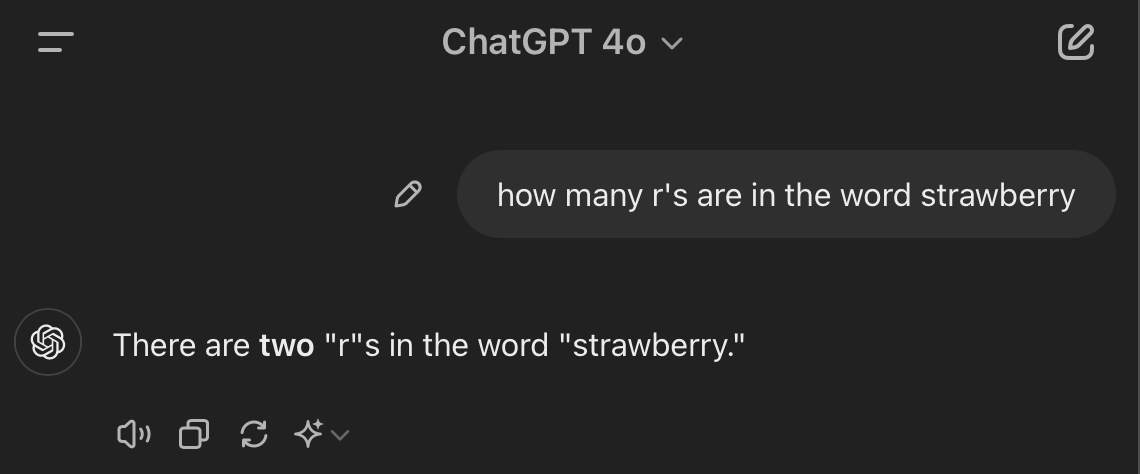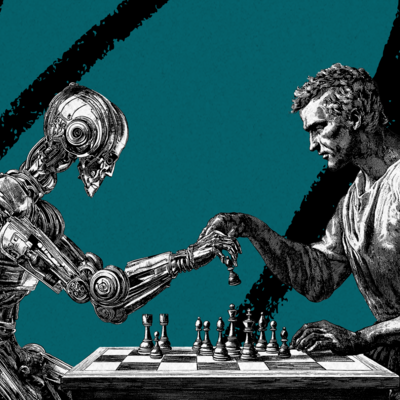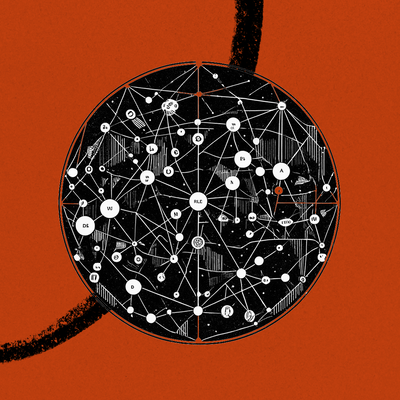
Was this newsletter forwarded to you? Sign up to get it in your inbox.
OpenAI has created a new model that could represent a major leap forward in its ability to reason. It’s called Strawberry. Here’s why:
If you ask ChatGPT how many “r”s are in the word “strawberry,” it famously fails miserably:
This occurs for two reasons. The first is that ChatGPT doesn’t actually see the word “strawberry.” Instead, it translates “strawberry” into an AI-readable language that represents words, not with letters, but with long strings of numbers. There’s no way for ChatGPT to count the number of letters in “strawberry.” It doesn’t see letters because of the way it’s built.The AI researcher Andrej Karpathy likens what ChatGPT sees to hieroglyphs, rather than letters. So asking it to count the number of “r”’s in strawberry is a little like asking it to count the number of “r”’s in 🍓. The question doesn’t really make sense, so it has to guess.
The second reason is that, even though ChatGPT can score a 700 on an SAT math test, it can’t actually count. It doesn’t reason logically. It simply makes good guesses about what comes next based on what its training data tells it is most statistically likely.
There are probably not many English sentences on the internet asking and answering how many “r”s are in the word strawberry—so its hunch is usually close, but not exactly right. This is true of all other math problems that ChatGPT is asked to solve, and it’s one reason why it often hallucinates on these types of inputs.
As initially reported by The Information, we don’t know a ton about Strawberry’s underlying architecture, but it appears to be a language model with significantly better reasoning abilities than current frontier models. This makes it better at solving problems that it hasn’t seen before, and less likely to hallucinate and make weird reasoning mistakes. Here’s what we know, and why it matters.
What Strawberry is
Strawberry is a language model trained through “process supervision.”
Process supervision means that during training, a model is rewarded for correctly moving through each reasoning step that will lead it to the answer. By comparison, most of today’s language models are trained via “outcome supervision.” They’re only rewarded if they get the answer right.
According to The Information, Strawberry “can solve math problems it hasn't seen before.” It can also “solve New York Times Connections, a complex word puzzle.” (I tried ChatGPT and Claude on Connections while writing this article. With the right prompting, I think I could get it to be a decent player, but it’s definitely not going to be expert-level.)
The Only Subscription
You Need to
Stay at the
Edge of AI
The essential toolkit for those shaping the future
"This might be the best value you
can get from an AI subscription."
- Jay S.
Join 100,000+ leaders, builders, and innovators

Email address
Already have an account? Sign in
What is included in a subscription?
Daily insights from AI pioneers + early access to powerful AI tools










Comments
Don't have an account? Sign up!
Dan.... you are our canary in the mine!!!! Your extreme curiosity, extraordinary talent, and high sensitivity with all 5 senses makes you the best person to poke the Strawberry around your work table when you get it. The best part, Dan? The best is your strength in writing clearly about the uniqueness; specifically, "Here's what's so great about this AI thingie" and "Here's where humanity still rules and is absolutely necessary for technology businesses to even exist."